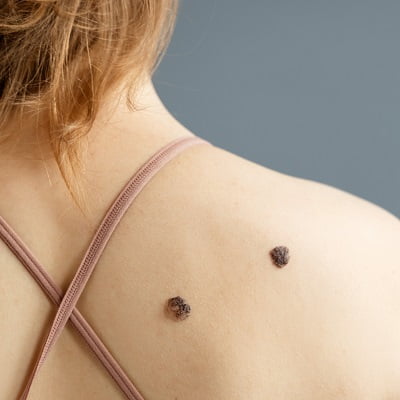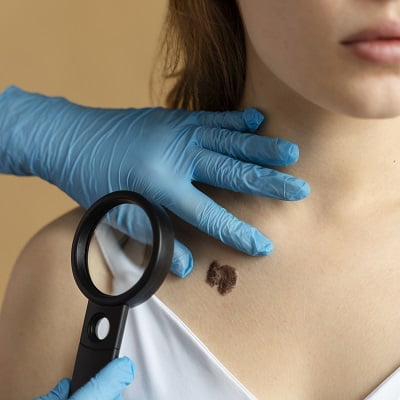
Many individuals decide to eliminate moles of natural skin growths for reasons including appearance or skin condition. Moreover, one often-used method to remove moles is laser therapy. Although, the technique is effective, many people question whether Does Laser Mole Removal Change Skin Texture? Therefore, this blog article will discuss how laser mole removal works, how it could alter your skin’s look, and what to anticipate after the treatment.
What is Laser Mole Removal?
A laser may eliminate moles without damaging the skin. It breaks down the pigment in the mole by using concentrated laser rays. Since the laser targets the mole cells, not the surrounding skin, it operates accurately and powerfully. Particularly beneficial for flat lesions, the laser may penetrate deeper layers of skin where the pigment resides.
Does Laser Mole Removal Change Skin Texture?
Concerns concerning laser mole removal mostly center on whether treatment alters the skin’s structure. The factors influencing the response are the practitioner’s skill, the size and depth of the mole, and your skin type. Usually, laser mole removal is done to minimize the impact on the skin’s structure. Nevertheless, there are several aspects to consider:
- Initial Redness and Swelling: First, redness and swelling may show up at the treatment area after the procedure. This is a usual reaction that passes in a few days. At this phase, the skin could feel rather rough or uneven.
- Healing Process: As the skin heals, a scab may develop over the treatment region. Avoid picking at the scab; this will alter the skin’s look and result in scarring. When the scab breaks off spontaneously, the skin underneath it may seem a bit different; however, with time, this usually evens out.
- Scar Formation: Sometimes, a little scar may remain behind, particularly in cases of a deeper mole. The scarred region could feel differently from the surrounding skin. However, if you look after yourself well later on, the scar may fade and become less noticeable.
- Skin Regeneration: The typical skin regeneration process is responsible mainly for improving the face. Over time, newly produced skin cells cover the treatment region and smooth the skin. Most individuals find that any changes in appearance only last a short period and improve as their skin recovers.
How to Minimize Changes in Skin Texture?
To maximize outcomes and minimize changes in skin structure, follow the treatment recommendations of your dermatologist. Some of them include:
- Keeping the treatment region free from the Sun is crucial so that UV rays won’t discolor still-healing skin or induce hyperpigmentation or scarring.
- Adding moisture to the region promotes skin healing. Your doctor would advise you to use a mild lotion free of clogging agents for pores.
- Steer clear of harsh skin care products in the region, even if they are improving, as they could damage and alter its structure.
- Be patient and give your skin the time it needs to recover correctly. Usually, changes in texture improve after a few weeks to several months.
The Role of Your Dermatologist
Selecting a qualified and experienced specialist at RCS-PK can help to ensure that laser mole removal is performed correctly and does not overly alter the look of your skin. To choose the appropriate course of action, a qualified specialist will consider your skin type, the mole’s characteristics, and overall health.
Patience After Laser Mole Removal
The path towards better, cleaner skin never ends, even after laser mole removal. Understanding and welcoming the chronology for the best outcomes is crucial during the healing process.
The post-procedural period calls for patience most of all. Although early symptoms like redness, swelling, and scabbing disappear in the first days, the healing process takes time overall. Gradual changes occur during the following weeks as the treated region matches the surrounding skin.
Final Thoughts:
A safe and efficient approach to removing ugly moles that hardly affect the structure of the skin is laser therapy of moles. While the wound heals, specific textural changes might occur, although they are usually minor and improve with time. If you consult a qualified dermatologist and carefully care for your skin after surgery, you will have clean, smooth skin with little likelihood of long-term changes in appearance.






